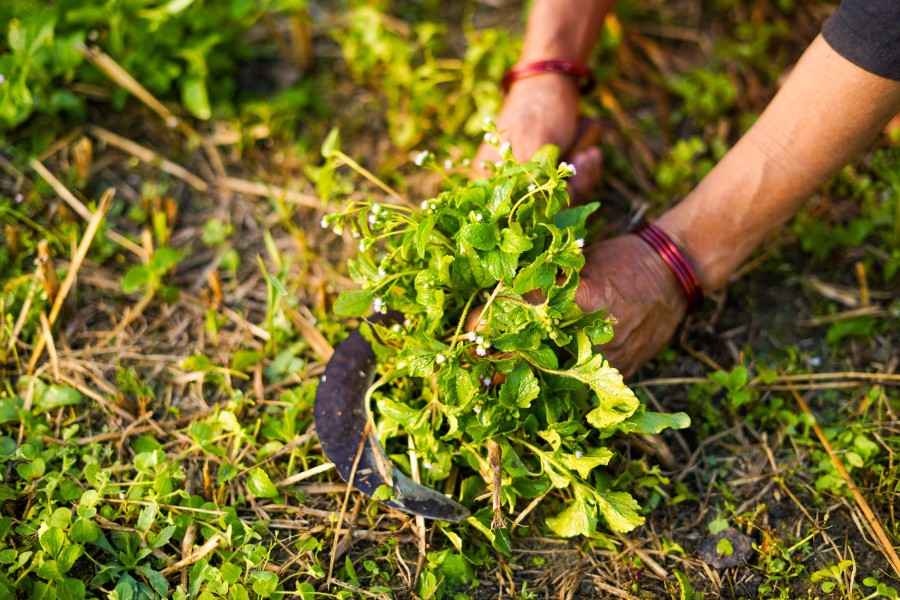On the occasion of the International Day of Plant Health we discuss the connection between agroecology and plant health with representatives of three member organizations of the Agroecology Coalition.
This article features extracts from conversations with Marcos Lana (Agroecology Europe and Swedish University of Agricultural Sciences), Gábor Figeczky (IFOAM – Organics International), Karthikeyan Muniappan (Nature-Positive Farming & Wholesome Foods Foundation).
Why are agroecology and plant health inextricably linked?
1.Agroecology promotes a healthy system for plants, animals, and humans. It can contribute to plant health by the way the system is designed. Agroecological system means a diversified system that fits well with environmental conditions, and that is in synergy with the different elements of the system.
Agroecology strongly works from the system perspective. We will have healthier plants when the system becomes healthier. It’s about soil, surrounding environment, natural elements of the landscape, and the humans that are managing the system. We want to provide a healthy environment for them too. – Marcos Lana.
In a world where everything is seen in a compartmentalized and specialized way, there is a need to look at health in a holistic way, and agroecology offers that kind of a space. We must look at agroecology to address the various issues related to plant health.– Karthikeyan Muniappan.
2. Agroecology promotes healthier plant nutrition by using ecological mechanisms to foster agriculture instead of external inputs which are toxic, harmful, and based on fossil fuels.
By eliminating dependence on harmful inputs, agroecological practices nourish soil life enabling farmers to grow healthy plants in harmony with nature. This is just one reason why communities in the Himalayas are designing a roadmap for an agroecological transition, a unique undertaking that will help achieve Zero Hunger, safeguard biodiversity and strengthen livelihoods. The roadmap will enable a transformation of food systems not only in the Himalayas but around the world.- Gábor Figeczky.
3. Agroecology helps to build plants’ resistance and resilience to extreme weather events.
More diverse systems, such as the agroecological ones, are more resilient to climate shocks. By having more diversity, we can expect that some of the crops will be less affected by extreme climate events. In this sense you buffer the effect of extreme events by increasing the resilience of the system. – Marcos Lana
Changing weather patterns and increasing temperatures are already affecting farming in the Himalayas. Agroecological practices include the use of locally adapted species and varieties and maintaining soil health which ensure the plants’ resilience to more extreme conditions. – Gábor Figeczky
4. Agroecology fosters diversity, and diversity means health. One of the major drivers of health problems for crops is monocultures. Biodiversity, which is one of the basic principles of agroecology, is key to improving plant health.
In the area we operate, which includes Eastern, Southern and central India, we insist on a combination of crops instead of monoculture. And we also insist on measures which lead to improvement in soil health. These two, in a way, create an environment for the plants to grow in a much healthier manner, which helps them to face any pest and disease attack in a better way later. They are more immune to such attacks when such things occur. – Karthikeyan Muniappan
5. Agroecology works with nature and for example, it replaces the role that synthetic inputs have in conventional systems. Instead, in agroecology, we rely more on recycling nutrients and keeping them within the environment.
In the conventional cropping system, we want to change the environment to accommodate the crops we want to grow. For this, the surrounding environment, or natural populations living in that place and the soil will be changed. In the agroecological approach, we fit the crops and the cropping system to the environment. Recently with the Ukrainian conflict, when farmers realized that synthetic fertilizers are not so cheap anymore, their interest shifted again on how we can do more nutrient recycling, and how can we keep nutrients within the system. It is in times of crisis that the agroecological principles are recognized as important and more sustainable. – Marcos Lana
Find out more:

